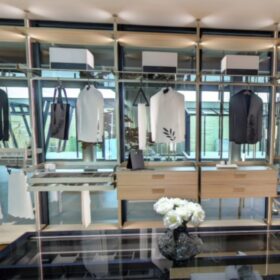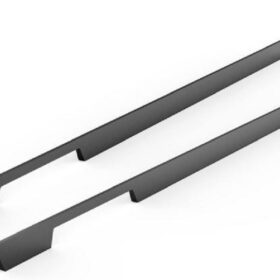Choosing the Right Aluminum Section for Your Curtain Wall
Curtain walls, a critical building component, provide a combination of aesthetics, durability, and energy efficiency. The choice of aluminum section for a curtain wall plays a pivotal role in determining these characteristics. This article provides a comprehensive guide to help architects and designers select the optimal aluminum section for their curtain wall needs.
Considerations for Aluminum Section Selection
Selecting the right aluminum section requires careful consideration of several factors:
– Structural Performance: The section’s strength, stiffness, and capacity to withstand wind and impact loads must be assessed to ensure structural integrity.
– Weather Resistance: The section’s resistance to corrosion, water penetration, and UV radiation must be evaluated to prevent premature deterioration.
– Aesthetic Appeal: The shape, dimensions, and finish of the section should align with the overall design aesthetic of the building.
– Installation Details: The section’s ease of fabrication, assembly, and field installation should be considered to minimize construction time and costs.
– Energy Efficiency: The section’s thermal performance, including its insulation and thermal bridging characteristics, should be evaluated to meet building energy codes.
Types of Aluminum Sections
Aluminum sections for curtain walls come in various types, each with its unique properties and applications:
– Mullions: Vertical members that support the cladding panels and carry vertical loads.
– Transoms: Horizontal members that connect mullions and support the weight of the glazing.
– Cladding Panels: Aluminum sheets or panels that enclose the exterior of the curtain wall, providing protection and aesthetics.
Material Grades
The grade of aluminum used for curtain wall sections affects their strength, durability, and corrosion resistance. Commonly used grades include:
– 6000 Series: Offers good strength, corrosion resistance, and workability, making it a popular choice for curtain walls.
– 7000 Series: Provides higher strength but is more susceptible to corrosion, requiring special treatments for increased durability.
Surface Finishes
Aluminum sections can be finished with a variety of coatings to enhance their aesthetic appeal and protective qualities:
– Anodizing: An electrochemical process that creates a durable, corrosion-resistant oxide layer on the aluminum surface.
– Powder Coating: A pigmented coating applied electrostatically, providing a wide range of colors and textures.
– Fluoropolymer Coating: A high-performance coating that offers exceptional durability, weather resistance, and UV protection.
Conclusion
Selecting the right aluminum section for a curtain wall is a critical decision that influences the structural performance, aesthetics, energy efficiency, and longevity of the building envelope. By carefully considering the factors outlined in this article, architects and designers can make informed decisions that optimize the curtain wall system’s overall functionality and visual impact.
-
2024-11-29Top Trends in Modern Kitchen Cabinet Pulls for 2024
-
2024-11-28The Ultimate Guide to Modern Kitchen Cabinet Pulls- Materials, Styles, and Tips
-
2024-11-27Elevate Your Kitchen Design with These Must-Have Modern Cabinet Pulls
-
2024-11-26Sleek and Stylish- The Best Modern Kitchen Cabinet Pulls for a Contemporary Look










